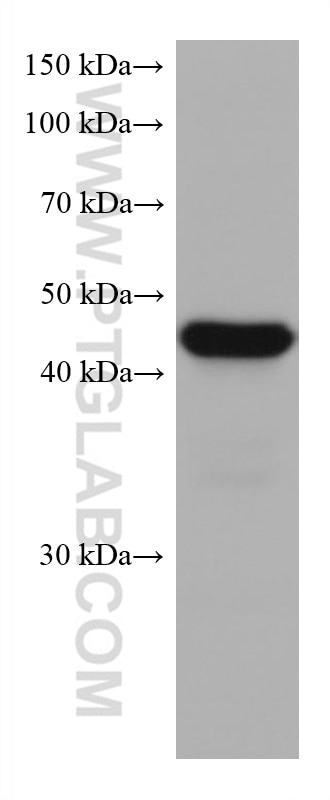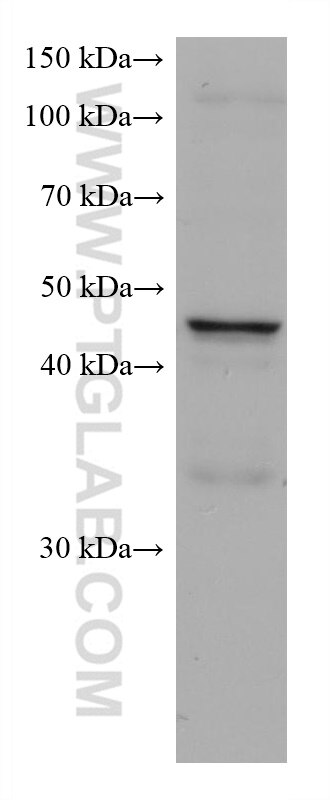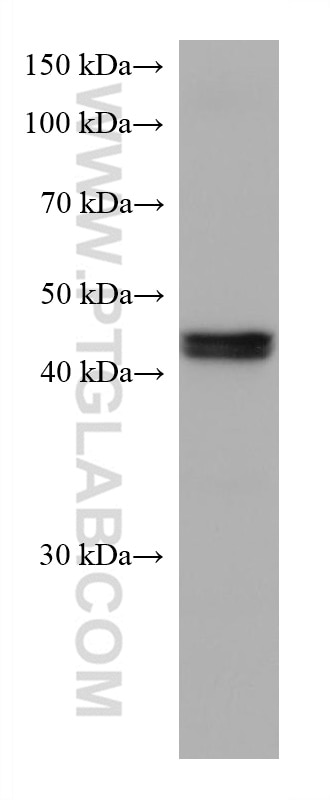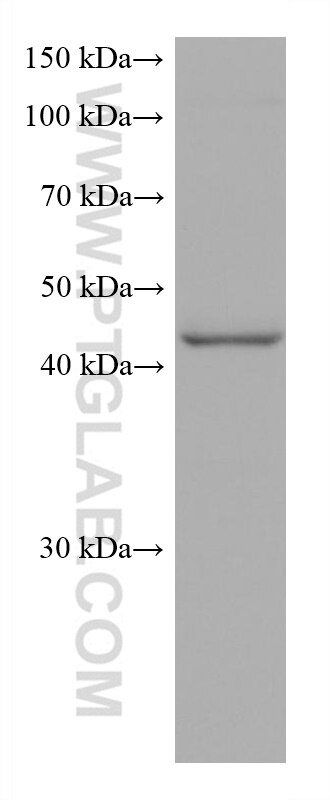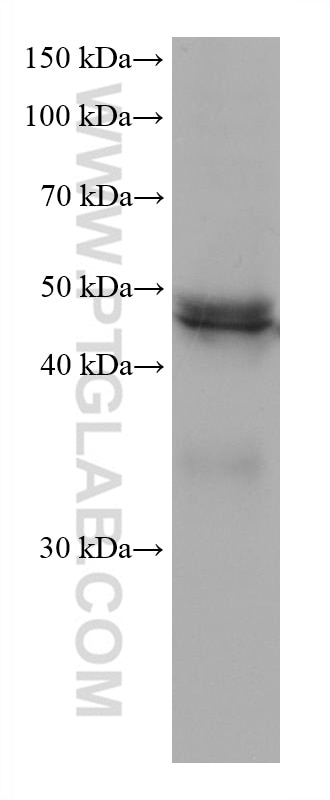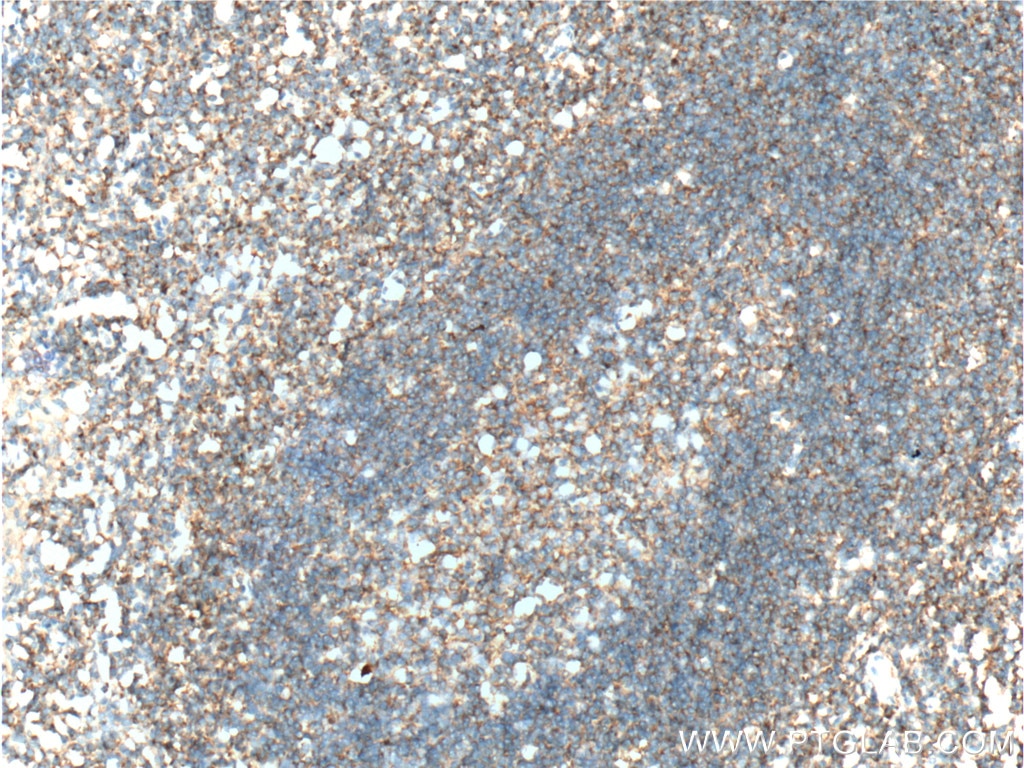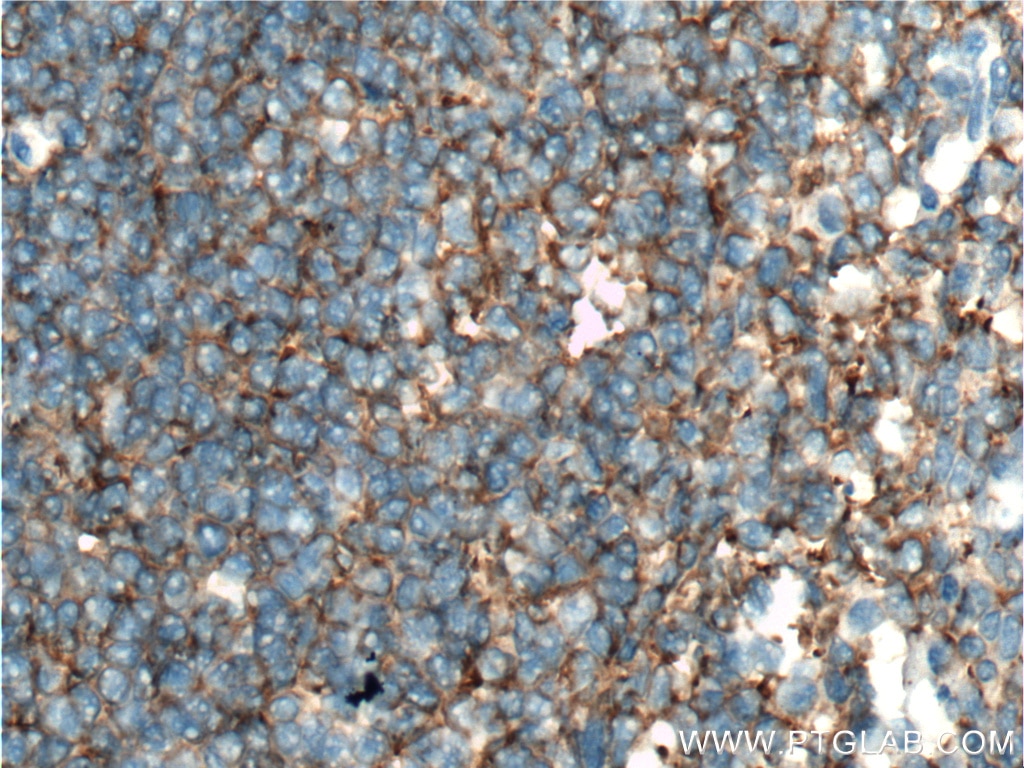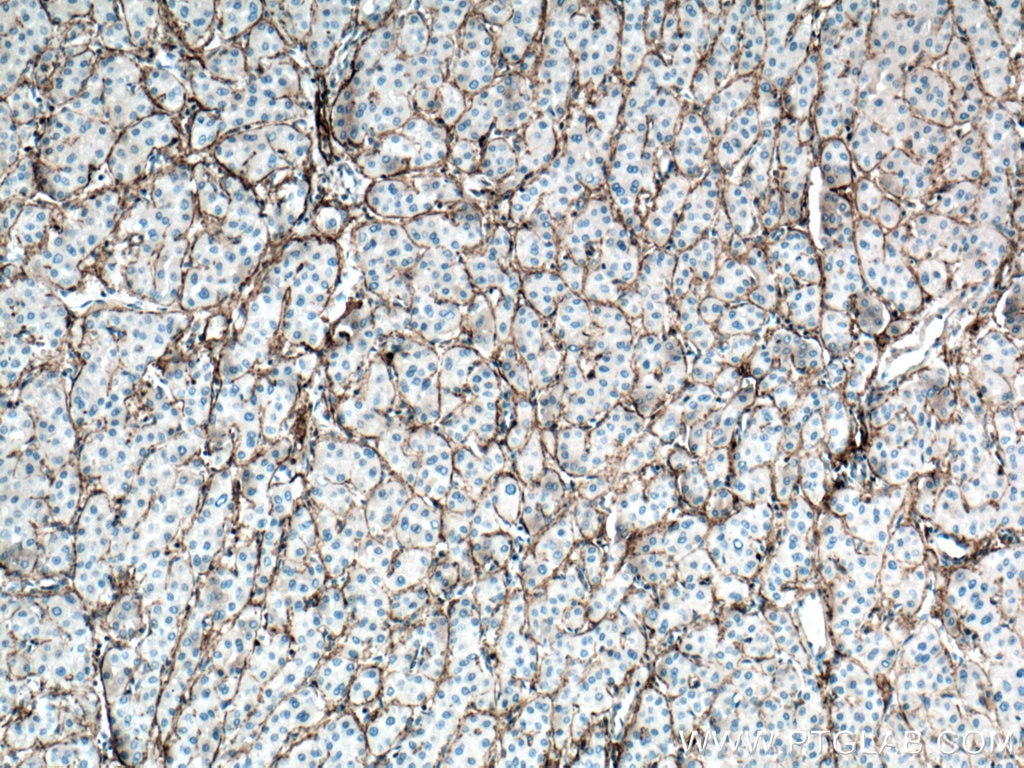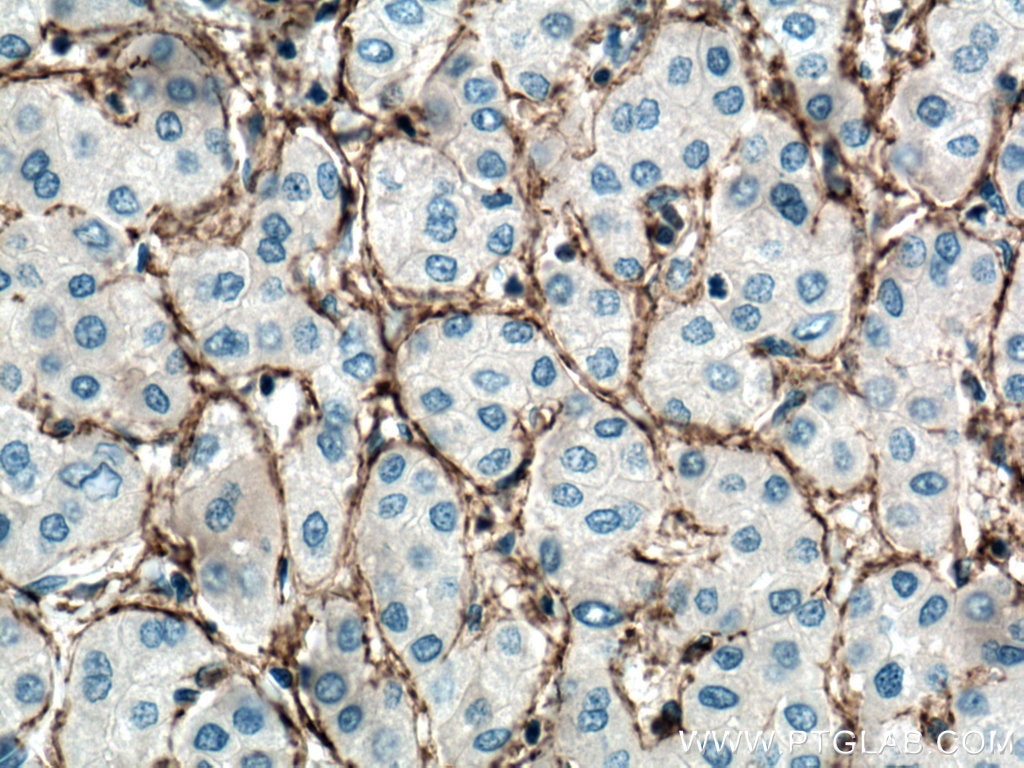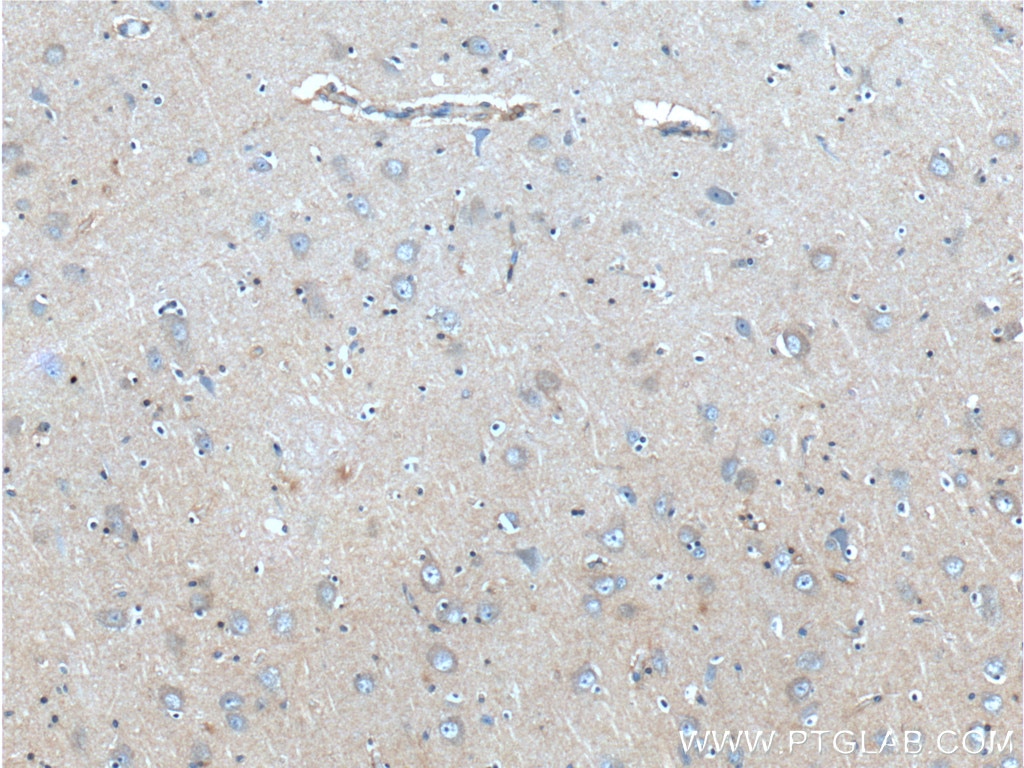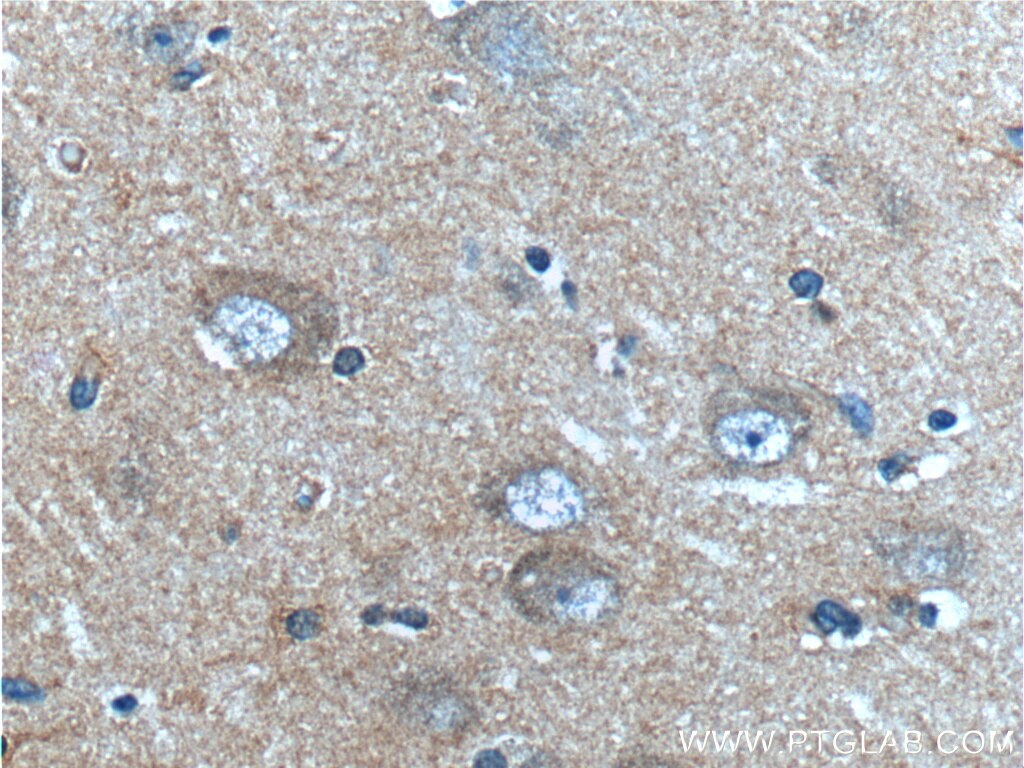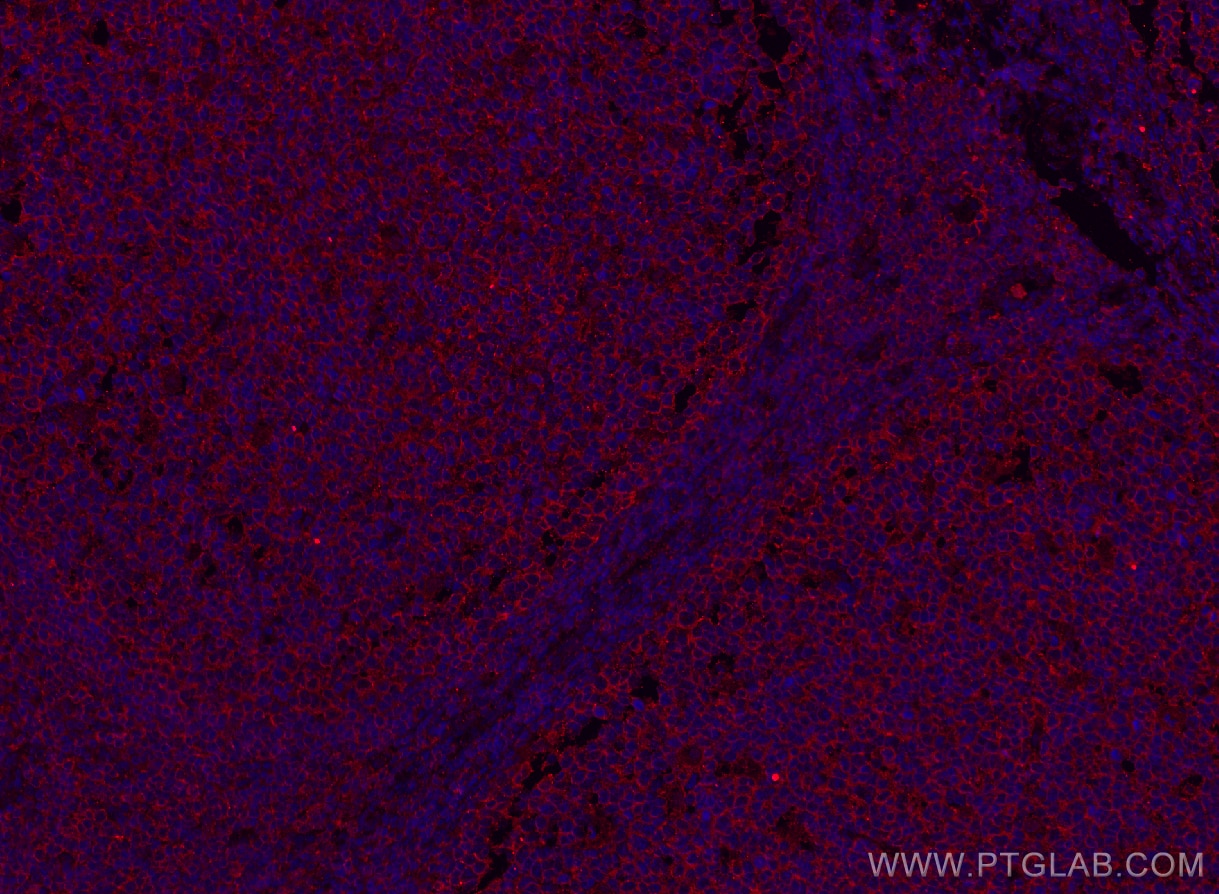- Featured Product
- KD/KO Validated
CXCR3B-specific Monoklonaler Antikörper
CXCR3B-specific Monoklonal Antikörper für WB, IHC, IF-P, ELISA
Wirt / Isotyp
Maus / IgG2b
Getestete Reaktivität
human und mehr (1)
Anwendung
WB, IHC, IF-P, ELISA
Konjugation
Unkonjugiert
CloneNo.
1B2D6
Kat-Nr. : 60065-1-Ig
Synonyme
Geprüfte Anwendungen
| Erfolgreiche Detektion in WB | MOLT-4-Zellen, HT-29-Zellen, Jurkat-Zellen, K-562-Zellen, U-937-Zellen |
| Erfolgreiche Detektion in IHC | humanes Tonsillitisgewebe, humanes Hirngewebe, humanes Leberkarzinomgewebe Hinweis: Antigendemaskierung mit TE-Puffer pH 9,0 empfohlen. (*) Wahlweise kann die Antigendemaskierung auch mit Citratpuffer pH 6,0 erfolgen. |
| Erfolgreiche Detektion in IF-P | humanes Tonsillitisgewebe |
Empfohlene Verdünnung
| Anwendung | Verdünnung |
|---|---|
| Western Blot (WB) | WB : 1:1000-1:6000 |
| Immunhistochemie (IHC) | IHC : 1:50-1:500 |
| Immunfluoreszenz (IF)-P | IF-P : 1:200-1:800 |
| It is recommended that this reagent should be titrated in each testing system to obtain optimal results. | |
| Sample-dependent, check data in validation data gallery | |
Veröffentlichte Anwendungen
| KD/KO | See 2 publications below |
| WB | See 7 publications below |
| IHC | See 4 publications below |
| IF | See 5 publications below |
| FC | See 3 publications below |
Produktinformation
60065-1-Ig bindet in WB, IHC, IF-P, ELISA CXCR3B-specific und zeigt Reaktivität mit human
| Getestete Reaktivität | human |
| In Publikationen genannte Reaktivität | human, Maus |
| Wirt / Isotyp | Maus / IgG2b |
| Klonalität | Monoklonal |
| Typ | Antikörper |
| Immunogen | Peptid |
| Vollständiger Name | chemokine (C-X-C motif) receptor 3 |
| Berechnetes Molekulargewicht | 46 kDa |
| Beobachtetes Molekulargewicht | 43 kDa |
| GenBank-Zugangsnummer | AF469635 |
| Gene symbol | CXCR3 |
| Gene ID (NCBI) | 2833 |
| Konjugation | Unkonjugiert |
| Form | Liquid |
| Reinigungsmethode | Protein-A-Reinigung |
| Lagerungspuffer | PBS with 0.02% sodium azide and 50% glycerol |
| Lagerungsbedingungen | Bei -20°C lagern. Nach dem Versand ein Jahr lang stabil Aliquotieren ist bei -20oC Lagerung nicht notwendig. 20ul Größen enthalten 0,1% BSA. |
Hintergrundinformationen
CXCR3 (C-X-C chemokine receptor type 3) is a G protein-coupled, seven-transmembrane domain chemokine receptor that is expressed on the surface of a number of cell types, including activated CD4+ and CD8+ T cells, NK and NK-T cells, plasmacytoid dendritic cells, and some B cells (PMID: 16847335). CXCR3 binds and is activated by the three IFN-gamma-inducible chemokines: CXCL9, CXCL10, and CXCL11. Binding of these ligands to CXCR3 has been implicated in regulating T-cell infiltration during inflammation and tissue injury (PMID: 17250586). Alternatively spliced transcript variants encoding different isoforms have been found for this gene. One of the isoforms, CXCR3B, mediates the angiostatic activity of CXCR3 ligands and also acts as functional receptor for CXCL4 (PMID:12782716). This monoclonal antibody is specific to CXCR3B.
Protokolle
| PRODUKTSPEZIFISCHE PROTOKOLLE | |
|---|---|
| WB protocol for CXCR3B-specific antibody 60065-1-Ig | Protokoll herunterladen |
| IHC protocol for CXCR3B-specific antibody 60065-1-Ig | Protokoll herunterladenl |
| IF protocol for CXCR3B-specific antibody 60065-1-Ig | Protokoll herunterladen |
| STANDARD-PROTOKOLLE | |
|---|---|
| Klicken Sie hier, um unsere Standardprotokolle anzuzeigen |
Publikationen
| Species | Application | Title |
|---|---|---|
Arterioscler Thromb Vasc Biol Pericyte regulation of vascular remodeling through the CXC receptor 3.
| ||
Int J Obes (Lond) Upregulation of angiostatic chemokines IP-10/CXCL10 and I-TAC/CXCL11 in human obesity and their implication for adipose tissue angiogenesis. | ||
Mol Cancer Altered CXCR3 isoform expression regulates prostate cancer cell migration and invasion. | ||
Cell Commun Signal Expression of E-cadherin and specific CXCR3 isoforms impact each other in prostate cancer. | ||
J Biol Chem A novel CXCR3-B chemokine receptor-induced growth-inhibitory signal in cancer cells is mediated through the regulation of Bach-1 protein and Nrf2 protein nuclear translocation.
| ||
Food Funct Genistein suppresses allergic contact dermatitis through regulating the MAP2K2/ERK pathway. |
